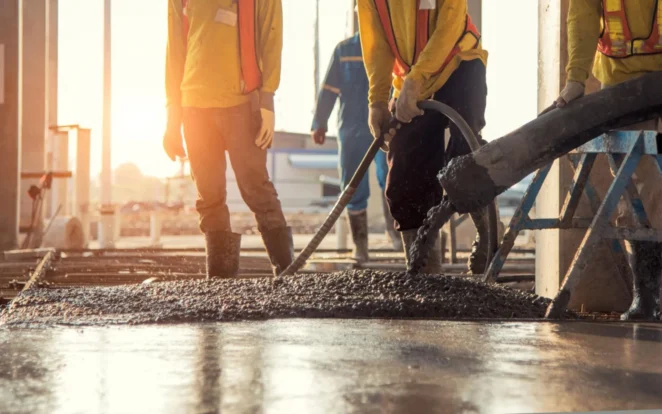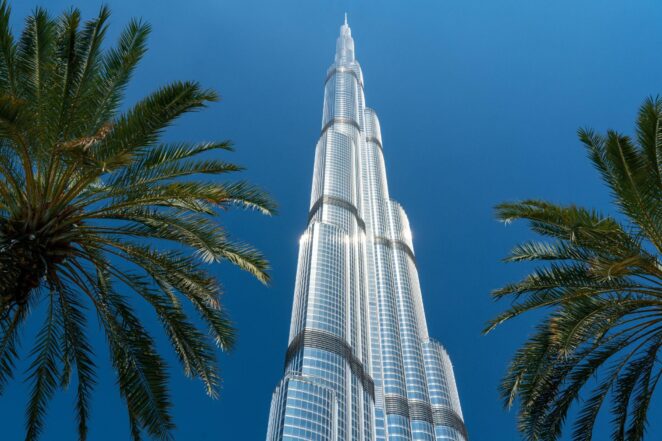Concrete is an essential material that surrounds us in our everyday lives. From the buildings we live in to the roads that we travel on, concrete plays a significant role in modern society. However, there are many fascinating aspects of concrete that often go unnoticed. In this post, we’ll explore some interesting facts about concrete that are sure to make you appreciate this versatile, durable material even more.
1. Ancient Beginnings
Concrete is not a recent invention – in fact, its history dates back to ancient times. The earliest known example of concrete usage is the construction of a settlement in Turkey around 6500 BC. This early form of concrete was made from a combination of lime and clay, demonstrating the early ingenuity of humans in creating durable structures.
2. Roman Concrete Secrets
The Romans were pioneers in the field of concrete construction. They developed a unique formula that allowed their concrete structures to withstand the test of time. Known as opus caementicium, Roman concrete was made by combining lime, volcanic ash called pozzolana, and water. The addition of pozzolana made the concrete stronger and more resistant to cracks, which is why many ancient Roman structures still stand today.
3. World’s Most Used Material

Concrete holds the title of being the most widely used material in the world other than water. Its durability and versatility make it a popular choice for construction projects around the world. From residential buildings to massive infrastructure projects like dams and bridges, concrete is the go-to material for engineers and architects. Learn more about concrete in commercial applications here.
4. The Great Wall of China
Contrary to popular belief, the Great Wall of China does contain some concrete elements. Although the main structure is composed of bricks and stone, certain parts of the wall were reinforced with a type of mortar made from a mixture of lime and sticky rice. This unique blend provided extra flexibility and strength, allowing the wall to withstand the test of time and various weather conditions.
5. The Hoover Dam
The Hoover Dam, an iconic symbol of American engineering, is a testament to the power of concrete. Constructed in the 1930s, it required a huge amount of concrete – over 3.25 million cubic yards – to complete. The dam’s concrete core is so massive that it continues to generate heat and has been slowly cooling over the years.
6. Underwater Concrete
Concrete has the remarkable ability to harden even when underwater, making it an ideal choice of material for constructing structures in marine environments. The secret lies in using additives in the concrete mixture, such as accelerators or superplasticizers that allow it to set and gain strength even when submerged. This underwater concrete is used for building underwater tunnels, bridges, and even offshore oil rigs.
7. The World’s Tallest Concrete Building

The Burj Khalifa in Dubai, United Arab Emirates, holds the record for being the tallest concrete building in the world. Standing at a massive height of 828 meters tall, the Burj Khalifa showcases the incredible strength and structural capabilities of concrete. Its construction required the pouring of massive amounts of concrete, weighing around 110,000 tons.
8. The World’s Longest Bridge
The record for the longest bridge in the world is held by the Danyang-Kunshan Grand Bridge in China. Stretching over 102 miles long, the bridge is a marvel of modern engineering. Its construction required a huge amount of steel – around 450,000 tons – to span such a vast distance, along with concrete reinforcements. The bridge showcases the strength, durability, and load-bearing capacity of concrete as it supports the weight of vehicles traveling across it.
9. Concrete Can Be Recycled
Concrete is known for its durability and longevity, but it is also recyclable. When buildings or structures made of concrete are demolished, the concrete can be crushed and used as an aggregate in new construction projects. This recycling process not only reduces waste but also helps conserve natural resources. Recycled concrete, known as recycled aggregate concrete, is gaining popularity as an eco-friendly alternative to traditional concrete.
10. Decorative Concrete
While concrete is often associated with its utilitarian use in construction, it can also be transformed into a beautiful, decorative material. With the use of dyes, stains, and stamping techniques, concrete can mimic the appearance of various natural materials like brick, stone, and wood. This opens up a world of design possibilities, allowing concrete to be used in decorative applications such as countertops, flooring, and even intricate sculptures.
11. Concrete Can Absorb Carbon Dioxide
In recent years, researchers have been exploring ways to make concrete more environmentally friendly. One innovation is the development of ‘carbonation curing’ techniques, where carbon dioxide is injected into the concrete mix during the curing process. As a result, the concrete can absorb and mineralize CO2, effectively reducing its carbon footprint. This technique shows promise in reducing greenhouse gas emissions and mitigating the environmental impact of concrete production.
12. The Concrete Jungle

The term ‘concrete jungle’ is often used to describe urban areas dominated by tall buildings and concrete structures. It reflects the rapid urbanization and architectural development seen in many cities worldwide. Concrete’s strength and versatility have made it a vital component in shaping our urban landscapes, allowing us to build upwards and create vibrant cityscapes.
13. Concrete’s Role in Energy Efficiency
Concrete’s thermal mass properties contribute to energy efficiency in buildings. Its ability to absorb and store heat helps regulate indoor temperatures by reducing fluctuations and the need for excessive heating or cooling. This property, known as thermal inertia, can result in significant energy savings and improved comfort in residential and commercial spaces.
Concrete is Fire-Resistant
Concrete is known for its fire-resistant properties, making it a safe choice for buildings and structures. Due to its high thermal mass, concrete can withstand high temperatures for extended periods without structural failure. It acts as a barrier to the spread of fire, providing valuable time for evacuation and firefighting efforts.
Concrete is a remarkable material that has played an essential role in shaping our modern world. From its ancient beginners to its innovative applications today, concrete continues to be a cornerstone of construction and infrastructure projects globally.




